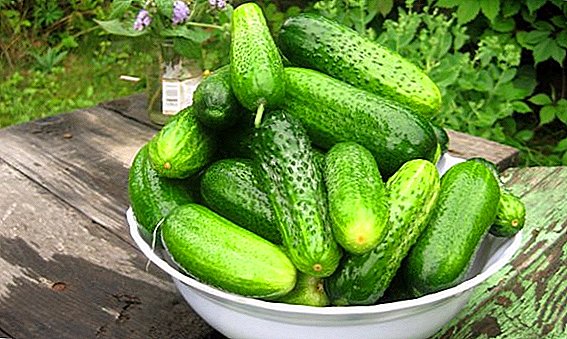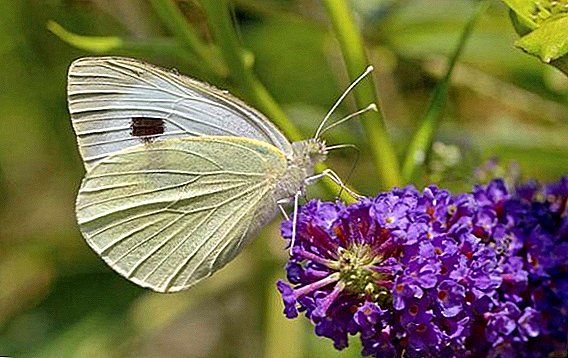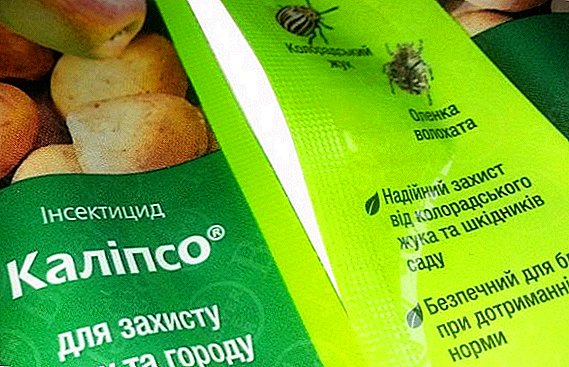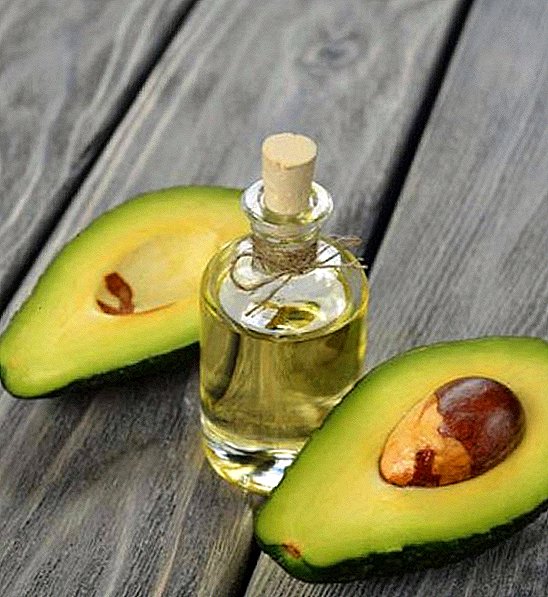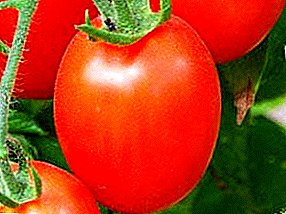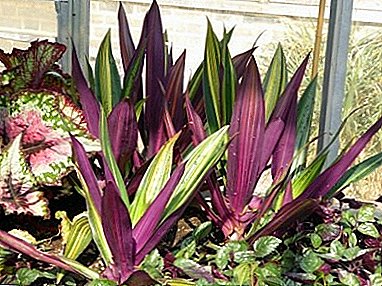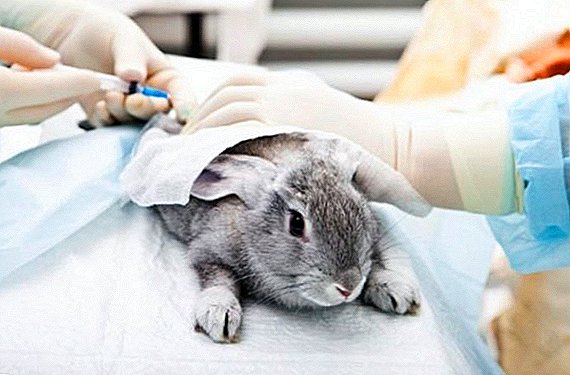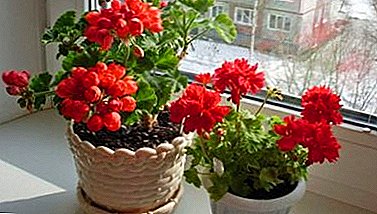
Almost every grower in the collection has such a plant as geranium. Now the popularity of this flower is growing due to the fact that there are more and more varieties of geraniums. Variety is able to surprise even the most fastidious grower. The second reason for the popularity is simplicity in care.
In this article we describe all the nuances, if you grow geraniums, ranging from the methods of reproduction and ending with possible pests.
Conditions for proper cultivation at home
This plant usually grows only on window sills, but it is suitable for cultivation and outdoors in the open field. This flower easily reproduces in several ways, besides, it can delight with its flowering for a long time.
How to grow a beautiful plant at home, what conditions should be provided at home? No special conditions for growing geraniums are needed.. It is enough to provide as much light as possible, the optimum light and temperature conditions, and also to fertilize the plant with the correct supplements.
If we talk about flowering, then, like for many other plants, winter is the resting period for geranium. At this time, the plant is gaining strength for the new season of blooming buds. But when flowers appear on the twigs, the plant needs to be given a lot of light, but light penumbra will make the geranium leaf plates more saturated.
Breeding secrets
Breeding manipulation is best done in autumn or spring. However, experienced growers recommend to multiply the flower in the spring, because at this time Geranium has the greatest ability to take root and soon to root.
Training
If you decide to propagate a flower with shoots, you need to prepare it in advance.. To start 15 days before dividing an adult plant, it must be fed with wood ash (method of preparation: dilute two tablespoons in 1000 ml of water). After feeding, the pot is cleaned in a dimly lit place, soil moisture is completely stopped. Such manipulation will give impetus to the formation of young shoots.
Cuttings
 Use a well-sharpened knife to cut the geranium process. There should be at least 3 leaves on this process. If we talk about the length, then it should be about 5-7 centimeters.
Use a well-sharpened knife to cut the geranium process. There should be at least 3 leaves on this process. If we talk about the length, then it should be about 5-7 centimeters.- If young shoots are not observed on an adult plant, their growth can be stimulated by radical methods. To do this, on the shoot throughout the circle you need to make a kind of cuts. After about 15 days, tubercles will appear at the site of the cuts, from which the young processes will then grow.
- The cuttings are dried for 2-3 hours, and after that they are powdered with the cut areas with crushed coal.
Reference! Additionally, you can handle cuttings of growth stimulant (usually used for this "Kornevin").
We invite you to watch a video about cutting geraniums:
Dividing bush
This method is better to combine with transplant. At this time, you can also carry out pruning. If you divide the bush in the fall, then many shoots can be cut down to stumps. This will allow the plant not to waste energy on maintaining the life of many leaves and shoots and save them for the new season.
It is necessary to divide the bush so that on each part there are several healthy kidneys.. After removing the flower from the ground, it should be examined for diseases and pests. Split plant is planted in the prepared soil. It is not recommended to tamp it.
Seeds
To see the flowering of geraniums in the middle of spring, sow seeds in early February. To do this, you need to prepare a nutrient soil (usually mixed with peat and perlite in the same proportions).
 Experienced growers say that there is no need to dip planting material in growth stimulants. However they recommend planting each seed in a separate container.
Experienced growers say that there is no need to dip planting material in growth stimulants. However they recommend planting each seed in a separate container.
- Place the seeds in a slightly moist substrate.
- Then the planting material is crushed with soil and again sprayed with room temperature water from a spray bottle.
- Cover with film or glass to create a greenhouse effect.
Terms of climbing seeds for each variety are different. But often within 10 days all viable seedlings germinate.
If the florist sowed the seeds in a common container, he it is necessary to dive shoots immediately after the appearance of the first pair of leaves. For seating pick up a container with a diameter of 7 centimeters. After removing the seedlings from the first soil, the roots are completely cleaned from the soil.
Care instructions
Selection of soil and pot
If we talk about the pot, then this plant will not dissolve the buds in a too spacious container. All forces will go to fill the entire system of the pot with the root system. Therefore it is necessary to give preference to pots, which will be several centimeters in diameter more than the volume of rhizomes. It is necessary to increase the size of the tank every two years, not more often.
As for the pot material, in this case geranium is unpretentious. The only important condition is the presence of drainage conditions. It must be remembered that this flower prefers dry soil.
Substrate for planting can be purchased ready in the store. But There are several ways to prepare the soil yourself:
- two parts of turf, one part of sand and peat;
- on one part of peat and perlite;
- peat and sand in equal proportions.
Watering
To avoid cracking the soil, it is better to water the geranium through the pan. Water for this purpose is used only at room temperature.
Reference! Very cool water can cause root decay.
Experienced growers recommend to moisten the soil only defended or filtered water. Hard water leads to limescale on the ground and flowerpot.
Irrigation mode depends on the time of year. During the warm period, the geranium is watered three times a week. You can slightly deviate from the proposed mode. The main thing is to ensure that the water in the soil does not stagnate and the substrate itself is not constantly wet.
Selection and lighting
 Geranium is a plant that prefers large amounts of light.. Therefore, the place you need to choose the appropriate.
Geranium is a plant that prefers large amounts of light.. Therefore, the place you need to choose the appropriate.
In the cool season it should be south or east window sills. In the summer, you can take the plant to a loggia or flowerbed. But make sure that strong gusts of wind do not harm the flower. In the hot hours of geranium, you can slightly pritenit, as the scorching sun burns leaf plates, making them pale and painful.
Temperature conditions
The most suitable temperatures to grow range from 22-24 degrees Celsius.. However, such a plant may exist at lower temperatures, but their performance should not fall below +12 degrees. A cooler temperature contributes to the development of flower diseases.
Air humidity
Geranium will feel good in a moderately humid room. However, it will not stand too dry air. It is not recommended to spray both the plant itself and the air around it. This can lead to decay of the root system.
Fertilizers
Start feeding better from the beginning of Februaryso that by the beginning of the new season geranium gained strength and additional nutrients. It is necessary to use ready-made complex fertilizing and make sure that they necessarily contain nitrogen, phosphorus and potassium.
Pruning
This procedure is necessary for the plant in order. to form a beautiful lush bush, as well as to form as many buds as possible on this bush.
There are three types of trimming:
- The main. Conducted at the very beginning of spring. This pruning is responsible for the formation of the bush of the correct form.
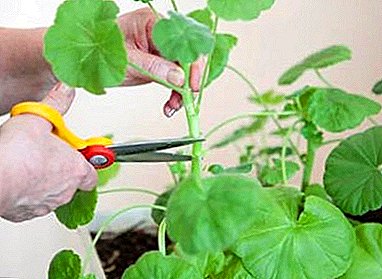 Autumn. It is held in autumn, when geranium finishes flowering and enters a resting stage. During this procedure, get rid of dry leaves and shoots, as well as faded buds. This manipulation is responsible for the general condition of the plant.
Autumn. It is held in autumn, when geranium finishes flowering and enters a resting stage. During this procedure, get rid of dry leaves and shoots, as well as faded buds. This manipulation is responsible for the general condition of the plant.- Nip. This pruning of the upper shoots. It stimulates the growth of lateral processes, which contributes to the growth of lush bushes.
Diseases and pests, possible problems
Geraniums are most often attacked by the following ailments:
- Gray mold. Gray mold manifests itself on leaf plates. You can fight it by spraying with antifungal drugs, after removing the affected leaves.
- Root rot. Root rot is mainly formed due to excess moisture in the soil. Therefore, this disease is better to prevent than to cure. To do this, you must comply with the correct watering irrigation and do not forget about the drainage layer and the holes.
- Mealy dew. Mealy dew is characterized by a patina of white color and arises due to the increased air humidity.
Pests that attack geraniums are the whitefly and aphids.. Destroy them with insecticidal solutions. The treatment is carried out two or three times with an interval of one week. But before that you can try to apply the soap solution. (Prepare it from 1 liter of water and two spoons of liquid soap). If the treatment does not help, you need to act differently - change the soil and the pot, after examining the roots and remove their affected parts.
Geranium - is one of the favorite flower growers. How can she grow? Without much difficulty. To do this, just follow the recommendations that we have outlined in this article. In addition, this plant can be a decoration not only for the room collection, but also for any outdoor flowerbed.


 Use a well-sharpened knife to cut the geranium process. There should be at least 3 leaves on this process. If we talk about the length, then it should be about 5-7 centimeters.
Use a well-sharpened knife to cut the geranium process. There should be at least 3 leaves on this process. If we talk about the length, then it should be about 5-7 centimeters. Autumn. It is held in autumn, when geranium finishes flowering and enters a resting stage. During this procedure, get rid of dry leaves and shoots, as well as faded buds. This manipulation is responsible for the general condition of the plant.
Autumn. It is held in autumn, when geranium finishes flowering and enters a resting stage. During this procedure, get rid of dry leaves and shoots, as well as faded buds. This manipulation is responsible for the general condition of the plant.